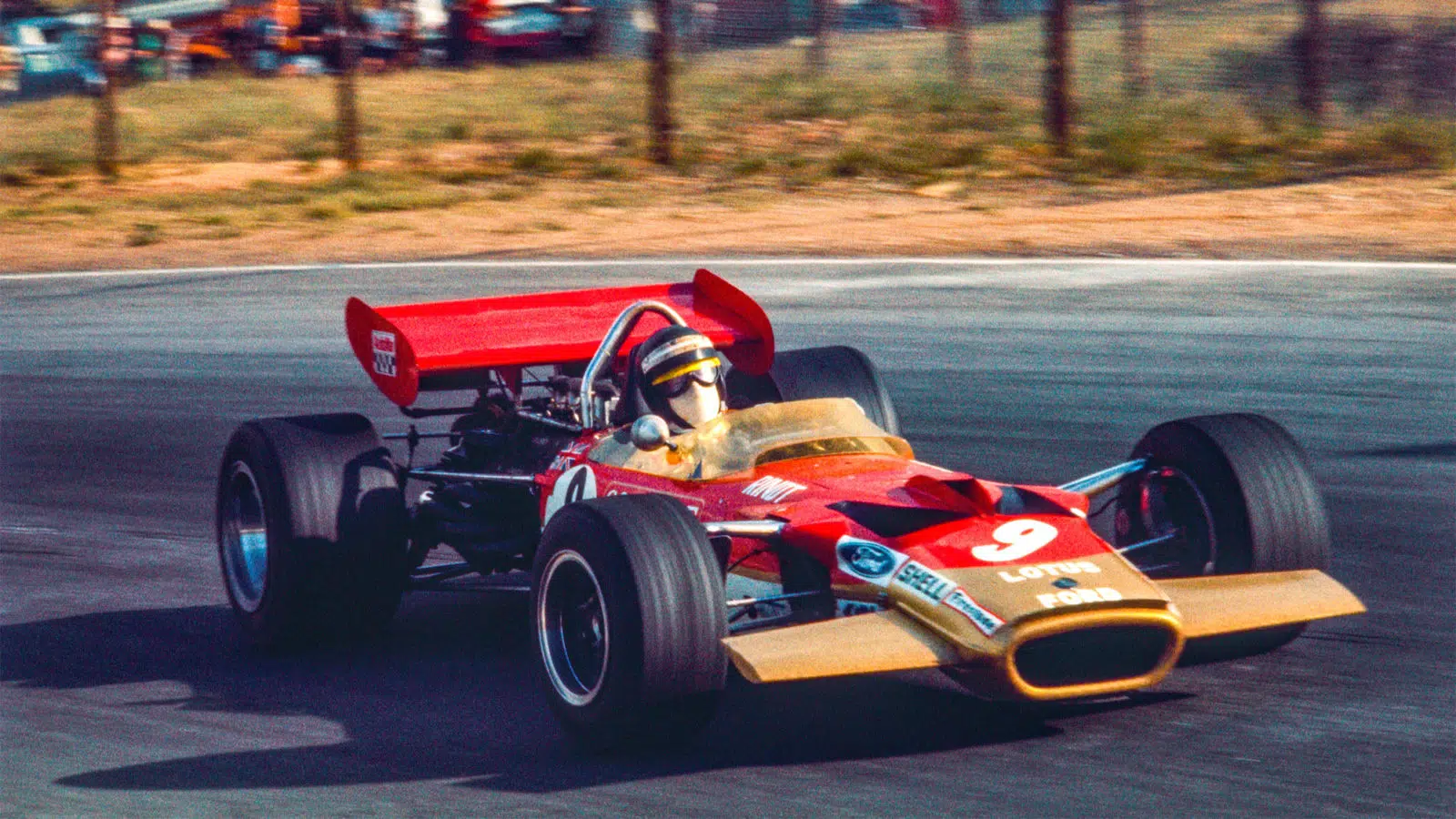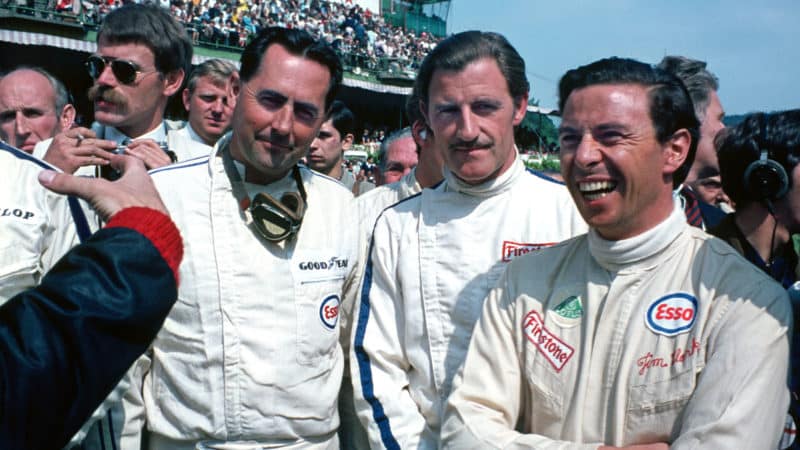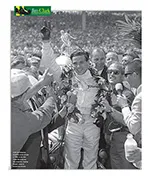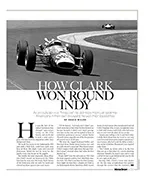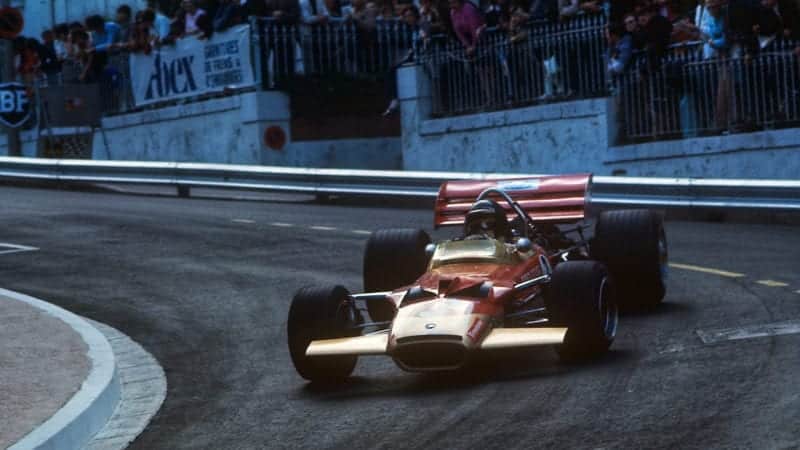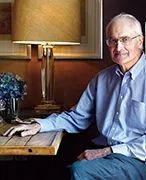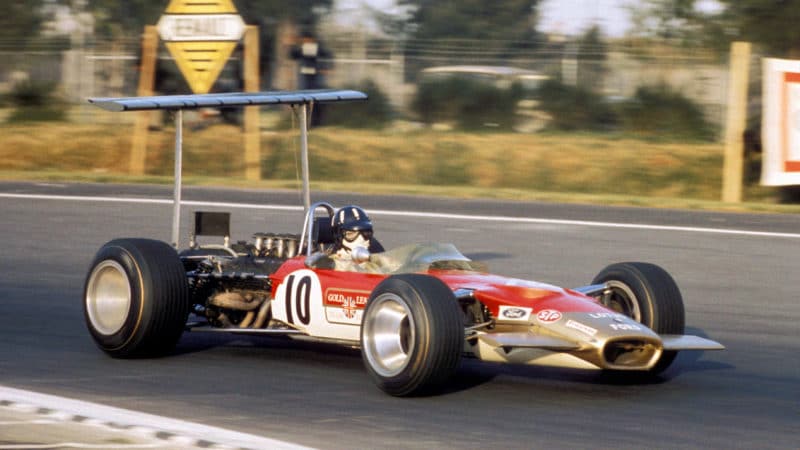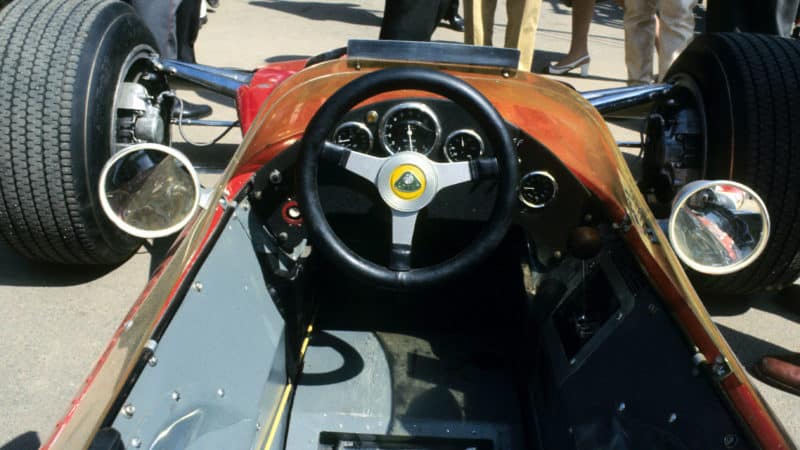The mere sight of this elegant new design, when the first two examples were rolled off the Team Lotus transporter in the Zandvoort paddock on 2 June 1967, was enough to have the rival teams worried. When it took to the track, they must have despaired. Graham Hill put it on pole position with a time that was six seconds under the lap record. Jim Clark, whose self-imposed tax exile had precluded him from any testing, had problems in practice, and qualified only eighth. In the race Hill led for 11 laps until the DFV’s camshaft broke, whereupon Clark swiftly moved through the field, passed Brabham to take the lead on the 16th lap, and drove to an apparently effortless victory. It was a debut to be ranked alongside Mercedes-Benz’s victory with the W196 and Fangio at Reims in 1954, a crushing display by a new car that had in one fell swoop rendered all other challengers obsolete.
The superiority of the Lotus 49 during that first season is hard to reconcile in the more modem world of grand prix racing when advances are reckoned in tenths, if not hundredths, of seconds. At Spa-Francorchamps, the old 8.76-mile Spa, Clark qualified on pole with a lap that was 7.5 seconds under the unofficial record, set by Phil Hill in the mighty 7.0-litre bewinged Chaparral 2F during practice for the Spa 1000km sportscar race the month before. Clark’s average speed for that lap was 151.56mph, on a circuit which he frankly admitted gave him the willies. Eddie Dennis, the man largely responsible for restoring the car photographed on these pages and a mechanic for the team that season, remembers Clark coming through at the end of the first lap of the race so far ahead that those in the pits were convinced that the rest of the field must have been wiped out in an accident.
If Spa demonstrated that the Lotus 49, especially in Clark’s hands, was in a class of its own in terms of raw speed, it also revealed that it was far from reliable. Hill’s car was retired after just three laps with no clutch; Clark had to stop twice to replace disintegrating spark plugs and finally took sixth place. But a pattern had been set that would last right through until the fourth round of the world championship the year after. From Zandvoort in 1967 to Monaco in 1968 – 12 grands prix – the Lotus 49 would start from pole position, lead the race and, unless mechanical problems intervened, it would win. It actually won seven of those first 12 starts, including two one-two finishes. Although it would continue to win races after that it would never again enjoy quite the same superiority, largely a result of the Cosworth DFV engine being made available to other teams, notably Ken Tyrrell’s Matra driven by Jackie Stewart, and the fact that Clark was no longer there to drive it…
Throughout 1968 the car steadily evolved. The most dramatic difference was first seen during the pre-season Tasman series, when the green and yellow official Team Lotus colours gave way to the garish red, gold and white of the John Player brand of Gold Leaf cigarettes. Then came the 49B, unveiled for the Monaco GP, with modest fins on the nose and a wedge-shaped tail to provide downforce at the rear.
